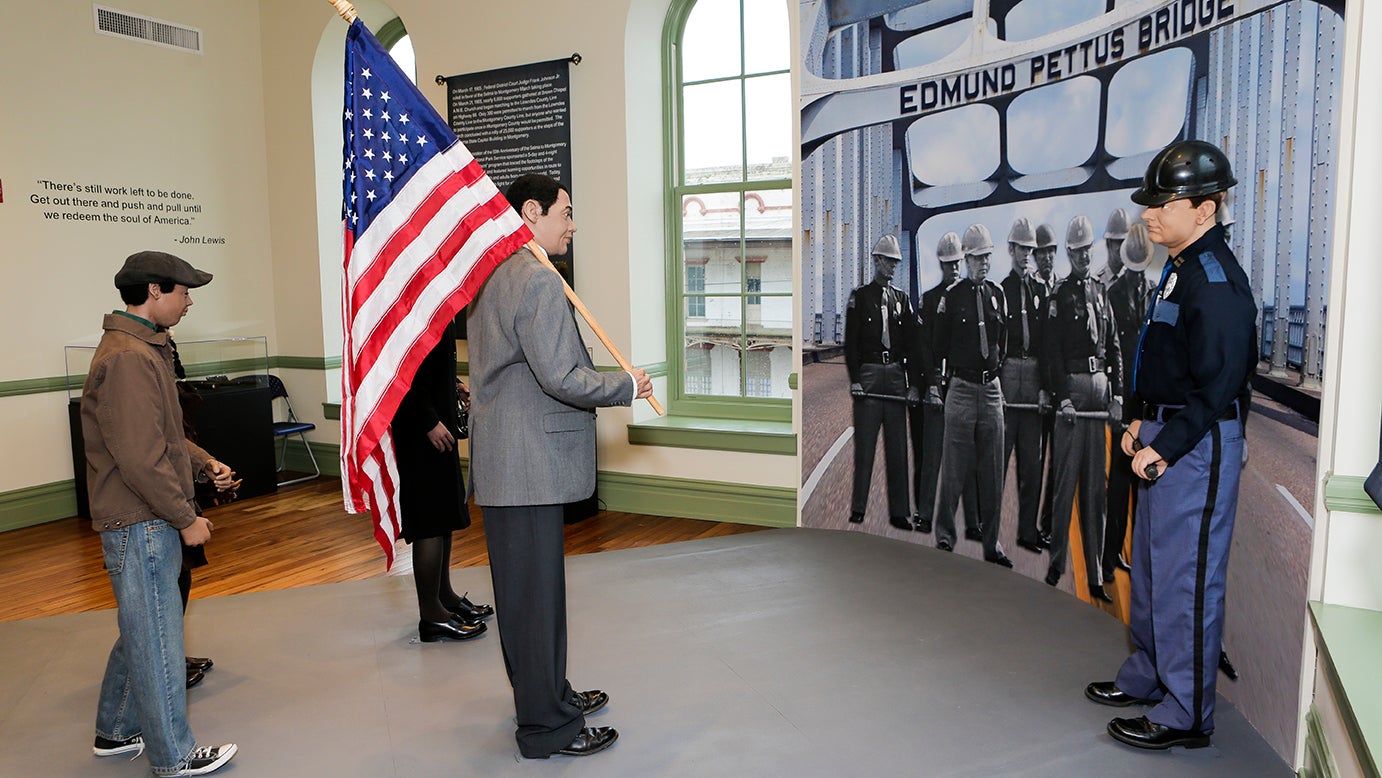Interpretive Center’s expansion tells lesser known stories
Published 9:23 pm Monday, February 27, 2017

- A life-like exhibit, depicting a scene from Bloody Sunday, is shown on the second floor of the Selma Interpretive Center. The center recently renovated the second and third floors, opening more exhibits. --Alaina Denean Deshazo
The Selma Interpretive Center is offering visitors a look into some lesser known stories from the famous voting rights movement.
Theresa Hall, park ranger with the National Park Service, said the purpose of the second and third floors of the center is to tell the stories that often go untold.
“You go a lot of places and you see a lot of exhibits,” Hall said. “Most people know the surface part of the story, but there’s all these little stories that are behind the scenes that happened, and they are such an integral part of the movement, they’re just not very well known.”
On the second floor is a variety of items and photographs depicting the people of the voting rights movement and even actual articles of clothing that were worn during the Selma to Montgomery march.
Some of the items include Converse shoes that were worn by a foot soldier, a badge given to a deputy from Sheriff Jim Clark, a mask that would have been worn on Bloody Sunday to prevent the law enforcement from breathing in tear gas, a copy of The Selma Times-Journal from Monday, March 8, 1965 and more.
“They’re symbols,” Hall said. “Each little piece is a symbol of what happened in those stories and to those people.”
Hall said it was very important that the center have artifacts from both the marchers and the law enforcement.
“As the National Park Service, we are here to tell the entire story from all perspectives,” Hall said. “It’s all part of the story. That’s our mission to preserve the stories.”
One item Hall said she is excited to be able to show off is the Congressional Medal that was awarded to the foot soldiers of the 1965 Selma to Montgomery march.
“I was actually privileged enough to be in Washington D.C. and watch them be awarded that medal,” Hall said. “The medal is so important and they are so deserving to have it. It’s wonderful that they are being recognized, the foot soldiers of the movement, in that way.”
Hall said having the medal there means a lot to the center and the National Park Service.
“It’s really exciting for us and it’s an honor to be able to have that medal here so that not only foot soldiers of the movement, but also their relatives, their friends and people all over the world can see that medal,” Hall said.
Also on the second floor is an interactive exhibit that features life like models of foot soldiers walking over the Edmund Pettus Bridge only to see law enforcement waiting on the other side.
“The exhibit is supposed to be an active type exhibit where people can actually walk up to it and be part of the scene, part of the action that’s going on as the people are walking across the bridge and seeing the law enforcement in front of them,” Hall said.
Hall said she is proud that when people visit the center, they can learn more about the movement and more than what is told on a normal basis, like the story about Jimmie Lee Jackson’s murder and how it kick started the movement.
“Had it not been for Marion, there wouldn’t have been a march,” Hall said. “Jimmie Lee Jackson, it was actually his death that was the catalyst for the march, so we wanted to make sure that story is told.”
Another story is that of the teachers march. Teachers from around the city marched from Clark Elementary School to the steps of the Dallas County Courthouse with the intention to register to vote.
“That march inspired so many people that were not participating in the movement to actually began participating in the movement,” Hall said. “Those teachers were professional people, they put their jobs on the line and it inspired people and other professional to get out there and be part of the movement.”
But Hall said the new improvements wouldn’t be complete with the banners on the third floor honoring the Courageous Eight. The eight members included Amelia Boynton, Marie Foster, Ernest Doyle, the Rev. John D. Hunter, James Gildersleeve, the Rev. Henry Shannon, Ulysses Blackmon and the Rev. Dr. Frederick D. Reese.
“The Courageous Eight is one of those stories that doesn’t get told a whole lot,” Hall said. “A lot of people know a lot about the voting rights movement, but there’s these little stories off on the side of people that did heroic and courageous things that don’t get the recognition, and that’s one of the things we tried to focus on in this exhibit.”
Hall said so far, the center has received a lot of positive remarks about the expansion and she is looking forward to having more visitors learn the history that is preserved in the center.
“The exhibits that are on the first floor are wonderful exhibits, but the ones that are upstairs add to that story and it opens this place up to where we can accommodate more and more people can come through and learn about these stories,” Hall said. “Our feedback is great. People are really enjoying being able to go up there to the other two floors. They really like the exhibits that are up there.”





